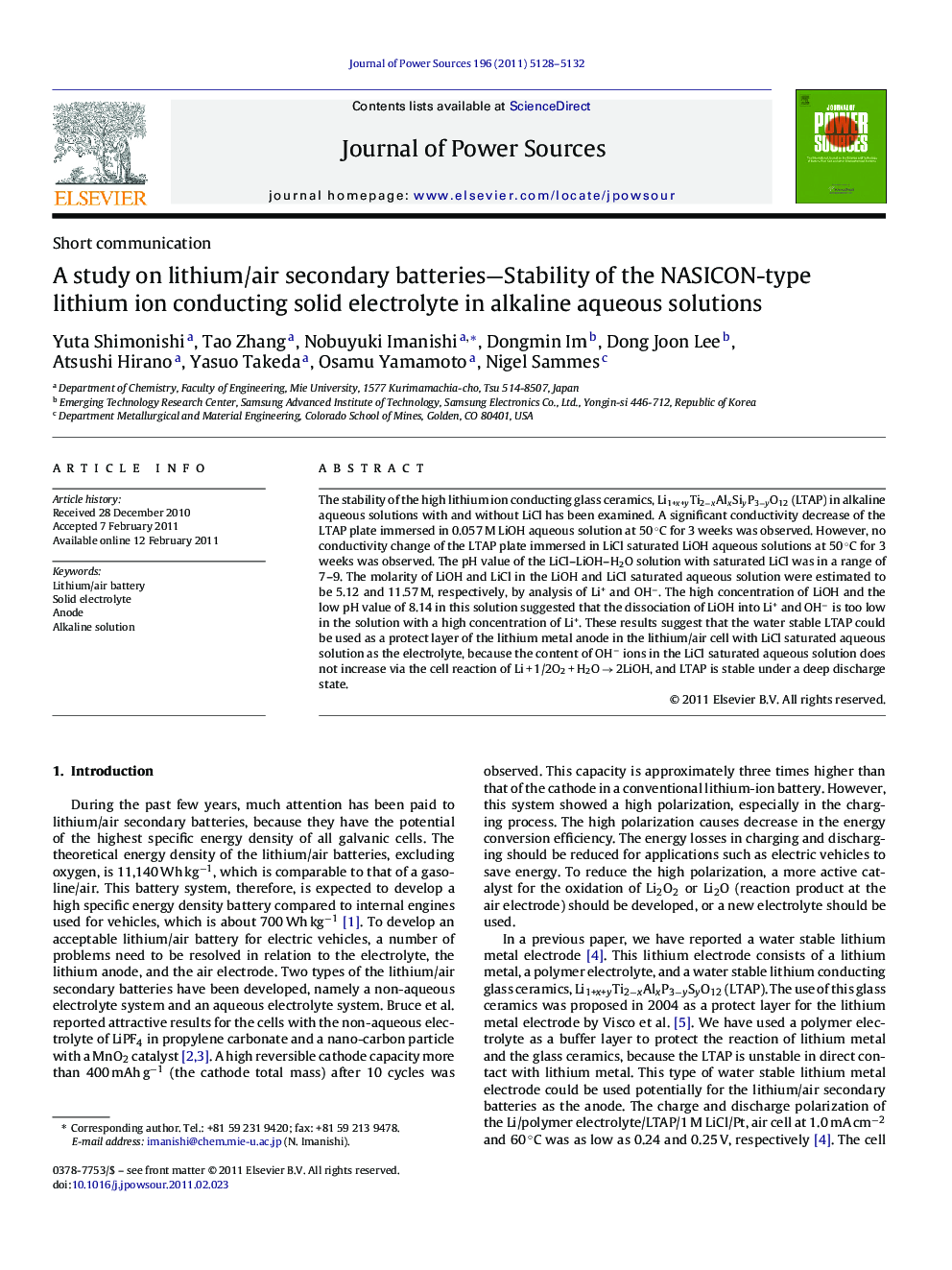| Article ID | Journal | Published Year | Pages | File Type |
|---|---|---|---|---|
| 1284786 | Journal of Power Sources | 2011 | 5 Pages |
The stability of the high lithium ion conducting glass ceramics, Li1+x+yTi2−xAlxSiyP3−yO12 (LTAP) in alkaline aqueous solutions with and without LiCl has been examined. A significant conductivity decrease of the LTAP plate immersed in 0.057 M LiOH aqueous solution at 50 °C for 3 weeks was observed. However, no conductivity change of the LTAP plate immersed in LiCl saturated LiOH aqueous solutions at 50 °C for 3 weeks was observed. The pH value of the LiCl–LiOH–H2O solution with saturated LiCl was in a range of 7–9. The molarity of LiOH and LiCl in the LiOH and LiCl saturated aqueous solution were estimated to be 5.12 and 11.57 M, respectively, by analysis of Li+ and OH−. The high concentration of LiOH and the low pH value of 8.14 in this solution suggested that the dissociation of LiOH into Li+ and OH− is too low in the solution with a high concentration of Li+. These results suggest that the water stable LTAP could be used as a protect layer of the lithium metal anode in the lithium/air cell with LiCl saturated aqueous solution as the electrolyte, because the content of OH− ions in the LiCl saturated aqueous solution does not increase via the cell reaction of Li + 1/2O2 + H2O → 2LiOH, and LTAP is stable under a deep discharge state.
Research highlights► LTAP plate is stable in saturated LiCl and LiOH solution. ► pH value of the solution is less than 10 in saturated LiCl and LiOH solution. ► LTAP plate can be used in the lithium/air batteries with saturated LiCl electrolyte.
